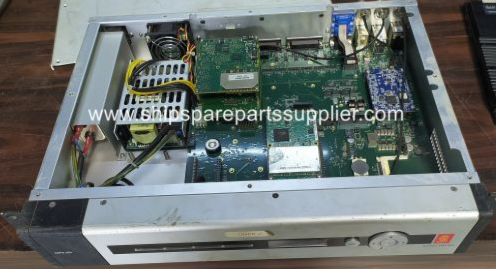In the modern maritime industry, Ship Automation has become a cornerstone for enhancing operational efficiency, safety, and reliability. The integration of advanced marine automation systems has revolutionized the way vessels are navigated and managed, significantly reducing the manual workload and minimizing human error. These sophisticated systems encompass a wide range of technologies designed to automate various functions on a ship, from navigation and propulsion to safety and environmental monitoring.
The Evolution of Marine Automation
Marine automation has evolved dramatically over the past few decades. Initially, automation systems were limited to basic navigational aids and engine controls. However, with advancements in technology, today's ship automation systems are highly complex, incorporating elements of artificial intelligence, machine learning, and the Internet of Things (IoT). These innovations have enabled the development of fully integrated automation platforms that provide real-time data and predictive analytics, allowing for more informed decision-making and proactive maintenance.
Key Components of Ship Automation Systems
1. Navigation Systems
Modern navigation systems are the backbone of ship automation. They include GPS, radar, and electronic chart display and information systems (ECDIS) that provide precise location tracking and route planning. These systems are often integrated with autopilot functions, enabling vessels to navigate pre-defined routes with minimal human intervention.
2. Propulsion and Engine Control
Automated propulsion and engine control systems are essential for optimizing fuel efficiency and maintaining engine performance. These systems monitor engine parameters, adjust fuel injection, and control propulsion mechanisms to ensure optimal operation. By automating these processes, ships can achieve significant fuel savings and reduce emissions.
3. Safety and Security Systems
Safety is paramount in the maritime industry. Advanced safety and security systems include automated fire detection and suppression, emergency shutdown systems, and intrusion detection. These systems continuously monitor the vessel for potential hazards and can initiate immediate responses to mitigate risks.
4. Environmental Monitoring
Environmental regulations require ships to monitor and control their emissions and waste management practices. Environmental monitoring systems track parameters such as fuel consumption, exhaust emissions, and ballast water quality. Automated reporting ensures compliance with international standards and helps protect marine ecosystems.
Advantages of Ship Automation
1. Enhanced Operational Efficiency
Automation significantly improves operational efficiency by reducing the need for manual intervention and streamlining processes. Automated systems can operate continuously and consistently, leading to increased productivity and lower operational costs.
2. Improved Safety
By minimizing human error and providing real-time monitoring and control, ship automation enhances the overall safety of maritime operations. Automated systems can quickly detect and respond to emergencies, reducing the risk of accidents and ensuring the well-being of the crew and cargo.
3. Cost Savings
The implementation of automated systems leads to substantial cost savings in terms of fuel consumption, maintenance, and labor. Predictive maintenance enabled by automation helps identify potential issues before they become critical, reducing downtime and repair costs.
4. Environmental Sustainability
Automation plays a crucial role in promoting environmental sustainability. By optimizing fuel usage and monitoring emissions, automated systems help ships comply with environmental regulations and reduce their carbon footprint. This contributes to the preservation of marine ecosystems and aligns with global sustainability goals.
Challenges in Implementing Ship Automation
Despite the numerous benefits, the implementation of ship automation systems presents certain challenges. These include the high initial investment costs, the need for skilled personnel to operate and maintain the systems, and potential cybersecurity threats. Ensuring the seamless integration of various automated systems and maintaining their interoperability is also a significant challenge that requires careful planning and execution.
Future Trends in Marine Automation
1. Autonomous Ships
The future of Marine Automation lies in the development of fully autonomous ships. These vessels will be capable of operating without human intervention, relying entirely on advanced sensors, AI, and machine learning algorithms. Autonomous ships promise to revolutionize the maritime industry by further enhancing efficiency, safety, and sustainability.
2. Enhanced Connectivity
With the advent of IoT and advanced communication technologies, ships will become increasingly connected. Enhanced connectivity will enable real-time data exchange between vessels and shore-based control centers, facilitating better decision-making and more efficient operations.
3. Artificial Intelligence and Machine Learning
AI and machine learning will play a pivotal role in the next generation of ship automation systems. These technologies will enable predictive maintenance, advanced navigational capabilities, and improved decision-making processes. AI-driven automation will further reduce the need for human intervention and enhance the overall performance of maritime operations.
4. Cybersecurity Measures
As ships become more automated and connected, cybersecurity will become a critical concern. Implementing robust cybersecurity measures to protect against cyber threats and ensure the integrity of automated systems will be essential for the safe and reliable operation of future maritime vessels.
Conclusion
The integration of Ship Automation And Control Systems is transforming the maritime industry, offering unparalleled benefits in terms of efficiency, safety, and environmental sustainability. As technology continues to advance, the future of marine automation holds even greater promise, with the potential to revolutionize maritime operations through autonomous ships, enhanced connectivity, and AI-driven solutions. Embracing these innovations will be crucial for the industry to navigate the challenges and opportunities of the future.






Comments